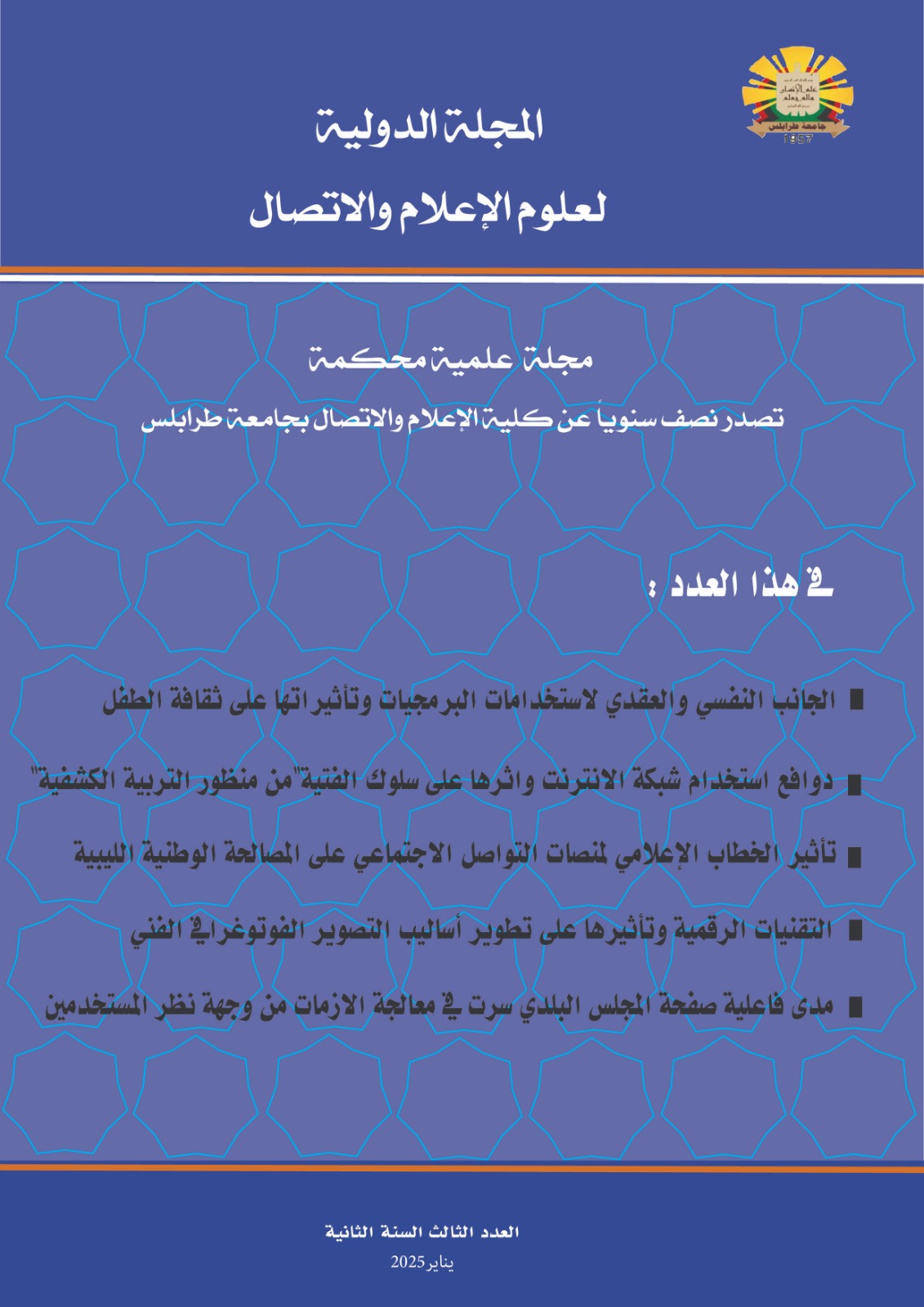الإرهاب والإعلام قراءة نقدية في سياسات التغطية الإخبارية للقنوات الفضائية العربية
الملخص
مستخلص الدراسة:
تناولت هذه الدراسة تحليلا مقارنا لسياسات التغطية الإخبارية لقناتي الجزيرة والعربية في تناول الأحداث الإرهابية، من خلال دراسة مضمون أربع مقاطع فيديو مختارة من نشرات أخبار القناتين، تتناول حدثين بارزين: هجمات 11 سبتمبر 2001 ومجزرة تل السلطان في غزة 2024. واعتمدت الدراسة على المنهج الوصفي التحليلي وأداة تحليل المضمون الكمي والنوعي، وهدفت إلى مقارنة طريقة تقديم كل من القناتين للأحداث الإرهابية، والكشف عن أوجه التشابه والاختلاف بينهما.
وأظهرت نتائج الدراسة وجود فروق واضحة في طريقة تغطية القناتين. فعلى سبيل المثال، في تغطية مجزرة تل السلطان، خصصت الجزيرة نسبة 18.75% من مدة النشرة لعرض صور ولقطات للضحايا، بينما لم تقدم العربية أي صور مباشرة للضحايا. كما خصصت الجزيرة 26.56% من مدة العرض لذكر ردود الأفعال الدولية والمؤسسات الدولية، مقابل 24% للعربية. وفي تغطية هجمات 11 سبتمبر، خصصت العربية 25.27% من مدة العرض لشرح خلفية الهجمات وربطها بالصراع بين القاعدة والولايات المتحدة، بينما لم تتطرق الجزيرة إلى هذا السياق، وأظهرت النتائج أن الجزيرة تركز على الجانب الإنساني للأحداث الإرهابية وتسلط الضوء على معاناة الضحايا، بينما تركز العربية على التحليل السياسي والسياق التاريخي. واوصت الدراسة إلى ضرورة إجراء مزيد من البحوث لفهم تأثير تغطية وسائل الإعلام للأحداث الإرهابية على المشاهدين وعلى تشكيل الرأي العام.
الكلمات المفتاحية: الإرهاب، الإعلام، القنوات الفضائية العربية، سياسات التغطية الإخبارية، تحليل المضمون، الجزيرة، العربية، الرأي العام، هجمات 11 سبتمبر، مجزرة تل السلطان بغزة.
Abstract of the study:
This study dealt with a comparative analysis of the news coverage policies of Al Jazeera and Al Arabiya channels in dealing with terrorist events, by studying the content of four selected video clips from the news bulletins of the two channels, covering two prominent events: the September 11, 2001 attacks and the Tel Sultan massacre in Gaza 2024. The study relied on the descriptive analytical approach and the quantitative and qualitative content analysis tool, and aimed to compare the way each channel presented terrorist events, and to reveal the similarities and differences between them.
The results of the study showed clear differences in the way the two channels covered them. For example, in covering the Tel Sultan massacre, Al Jazeera allocated 18.75% of the bulletin time to displaying pictures and footage of the victims, while Al Arabiya did not provide any direct pictures of the victims. Al Jazeera also allocated 26.56% of the broadcast time to mentioning international reactions and international institutions, compared to 24% for Al Arabiya. In covering the September 11 attacks, Al Arabiya devoted 25.27% of the show time to explaining the background of the attacks and linking them to the conflict between Al Qaeda and the United States, while Al Jazeera did not address this context. The results showed that Al Jazeera focused on the human aspect of terrorist events and highlighted the suffering of the victims, while Al Arabiya focused on political analysis and historical context. The study recommended the need for further research to understand the impact of media coverage of terrorist events on viewers and on shaping public opinion.
Keywords: Terrorism, Media, Arab satellite channels, News coverage policies, Content analysis, Al Jazeera, Al Arabiya, Public opinion, September 11 attacks, Tel Sultan massacre in Gaza.

